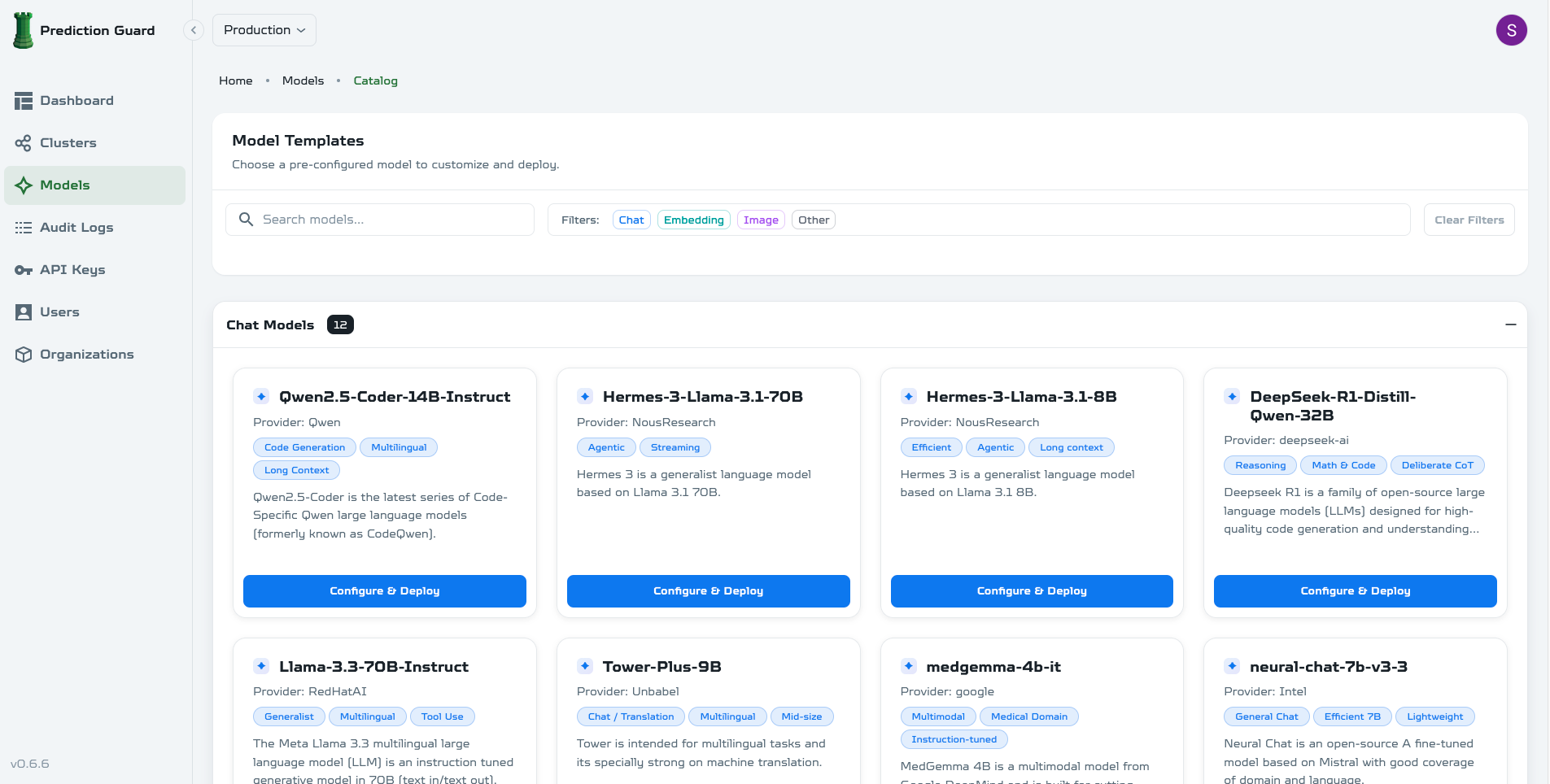Model Management
Deploy and configure models in your Prediction Guard platform.
Model Deployment

Deploy from Hugging Face
- Browse the model library in the admin panel
- Search for models by name or type
- Click Deploy and configure settings
- Monitor deployment progress
- Test the model via API
Upload Custom Models
- Upload model files to your platform
- Configure model settings (name, description, capabilities)
- Set resource requirements (CPU, GPU, memory)
- Deploy and test the model
- Make available to API users
Model Configuration
General Settings
- Select from Catalog: Choose from available model catalog
- Model Name: Display name for the model
- Description: Model description and capabilities
- Container Image URL: Custom container image (optional)
- Replicas: Number of model instances to run
- Enable Model: Toggle model availability
- Runtime Class Name: Kubernetes runtime class
Model Parameters
- Model CPU (millicores): CPU allocation for the model server
- Model Memory (GB): RAM allocation for the model
- Accelerator Cards: Number of GPUs to allocate
- Card Type: GPU type (NVIDIA, etc.)
- Hugepages (GB): Memory optimization settings
- Max Input Tokens: Maximum input context length
- Max Total Tokens: Maximum total tokens per request
- Min Input Tokens: Minimum input tokens required
- Max Client Batches: Maximum concurrent client batches
- Aliases: Model aliases (one per line)
Model Capabilities
- Streaming: Enable streaming responses
- Tool Use: Enable tool/function calling capabilities
- Image Input: Enable image processing capabilities
- Image Formats: Supported image formats (PNG, JPEG, etc.)
- Capabilities: Model capabilities (embedding, chat, etc.)
Advanced Configuration
- Container Execution: Define container command and arguments
- Environment Variables: Set environment variables (YAML)
- K8s Resource Limits: Configure Kubernetes resource limits (YAML)
- K8s Scheduling: Control pod placement with selectors and affinity
- K8s Storage: Configure and mount storage volumes
- K8s Health Probes: Configure liveness and readiness probes

